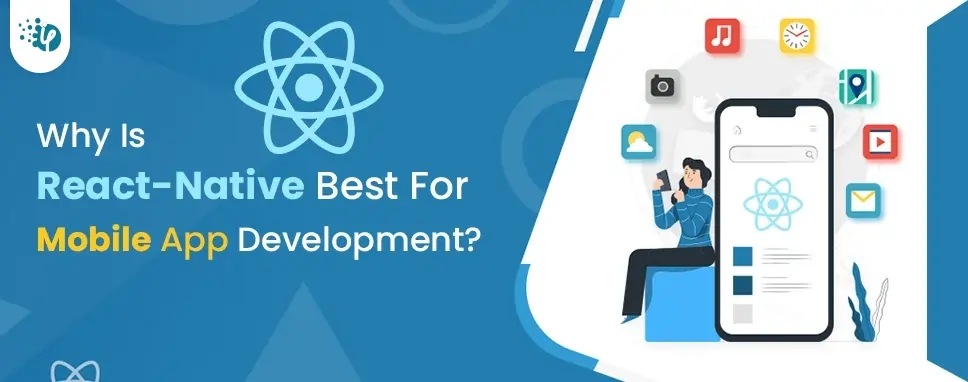Top Shift Left security Best Practices CTOs should consider
According to HackerOne, fixing a security issue after software is released can cost 30 times more than fixing it during development. Today, CTOs take a different approach. Shift...
Listening is fun too.
Straighten your back and cherish with coffee - PLAY !

The popularity of React Native as a robust cross-platform app development framework has already been established. A whole array of leading brands such as Airbnb, Wix, Facebook, Netflix, Instagram, and many others rely on React Native.
There are examples of getting quick results in traffic footfall, download volume, and business conversion after switching to React Native. Instagram, for example, became more popular because of its lucid user experience after switching to React Native in 2016.
So, the positive impact React Native can have on mobile app projects is already established. But still, if the role of React Native doesn’t seem to be convincing enough for mobile app projects, here we are going to explain the key benefits of using React Native for mobile app development.
Thanks to React Native, app developers can get rid of the responsibility of coding separately for iOS or Android. Reusability of the core codebase results in faster development. This in turn requires lesser spending of an hourly rate for developers. React Native ensures speedier growth and lower spending on app projects.
React Native also offers several open-source libraries for UI building and quick access to many ready-to-use components created by other developers. This further lowers the development time and ensures more efficiency and less spending.
React Native helps developers make swift code changes without waiting for the entire app to reload. App developers can work on the code and make changes and code fixing in real-time while the app is still running.
As soon as the code changes are done, they are reflected in real-time. Instead of taking time for the entire app to finish loading, simple code pushes in different areas are reflected in real-time. This also allows better iterations throughout the app projects.
React Native at the same time does not offer everything out of the box, but developers can always access a whole array of native and JavaScript modules for their development needs.
As a React-Native developer, you can always use third-party plugins to integrate new features or functions from other apps. This ease of using third-party plugins helps React Native app projects to remain flexible and efficient.
React-Native allows modular programming architecture enabling the developers to segregate and integrate code blocks for different feature development needs. These code blocks referred to as modules ensure flexible and efficient development.
This aspect also opens up the creative possibilities for the developers as React Native developers can dig into each other’s projects and pick modules for reusing in their apps. Thanks to this modular architecture, updating the apps also becomes incredibly easier.
React Native comes with a robust repository of native components for iOS and Android to help developers create user interfaces quicker while ensuring optimum agility in the app performance.
Another great thing about React Native is that it can easily integrate with native OS code. This is why apart from using it for cross-platform development projects, developers often use React Native to create extensions for existing native iOS or Android apps.
React Native has become one of the most popular app development frameworks also because of its easy adaptability and manageable learning curve. First of all, it is a JavaScript framework and JavaScript is pretty popular as a web development language. In fact, most developers begin their careers with HTML, CSS, and JavaScript.
On the other hand, React Native is modular, component-based, and supported by a huge community of developers spread all over the globe. This further lowers the learning curve for developers. You learn by using ready-to-use modules and components while coding less. When you are stuck at certain places, the robust community help comes in handy.
Memory consumption is not just a criterion to choose one app over another. It is equally an important criterion for developers to choose one framework over others. React Native uses less memory and processing power of devices than other cross-platform technologies.
Just because it achieves the native look, feel, and functionalities by using third-party plugins, the apps enjoy smooth runtime. Most importantly, you don’t need to use WebView to connect to the native module. Just because cross-linking is not required to connect native modules, it needs less use of device storage space. This requires very little device memory and processing power, resulting in uncompromising performance.
Finally, one chooses React Native because it has been the most popular framework for mobile app development for several years in a row. The huge popularity, continuous value additions and updates, and patronage of the world’s leading apps made React Native the present and future framework. How can aspiring app developers undermine such a robust technology?
The huge and continuously expanding community of React Native developers is too obvious a reason for anyone to rely on online support and help during the project. React Native is loved by most app developers who are proactive enough to create new approaches, modules, and components for other developers to use.
The phenomenal growth and popularity could not fail to lure Microsoft, who now contributed a new fork called React Native for Windows. This can be used for developing React Native apps for Microsoft operating systems such as Windows 10, Windows 10 Mobile, and Xbox.
After React Native came into existence in 2014, the world of mobile apps can never be the same again. It completely transformed the way cross-platform app development was conceptualized and practiced. In the way React Native continues to renew itself every then and now, its dominance is likely to continue for years to come.

According to HackerOne, fixing a security issue after software is released can cost 30 times more than fixing it during development. Today, CTOs take a different approach. Shift...

A few years ago, companies built software first and thought about security later. Developers and security teams did not cooperate, and problems were fixed only after release. This activated DevSecOps vulnerabilities and many DevSecOps failures.

Security has always been a major concern. Your company spends millions on cybersecurity tools, and guess what? You’re still vulnerable. When you're working in the cloud, especially...